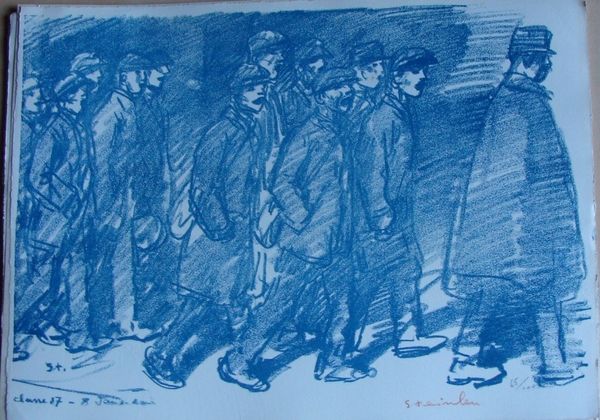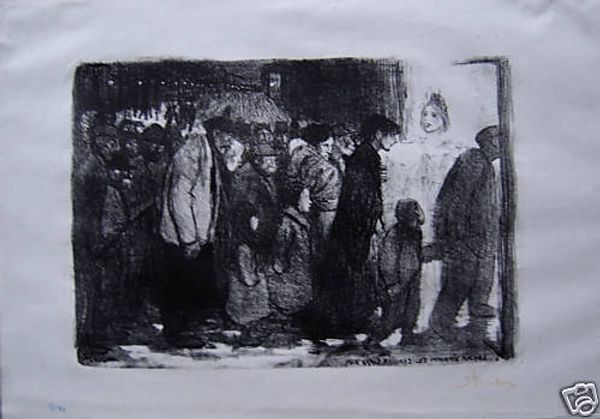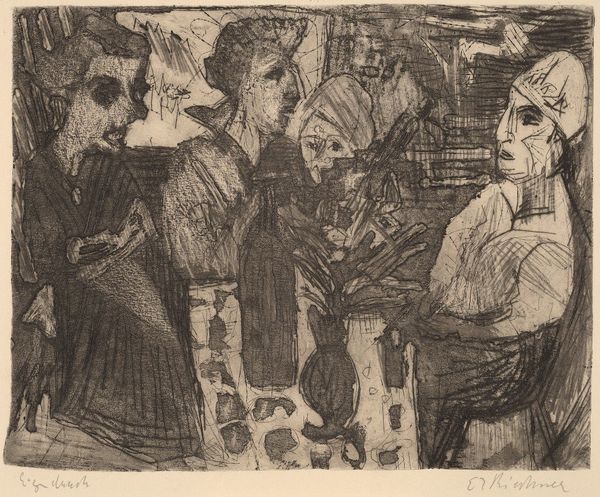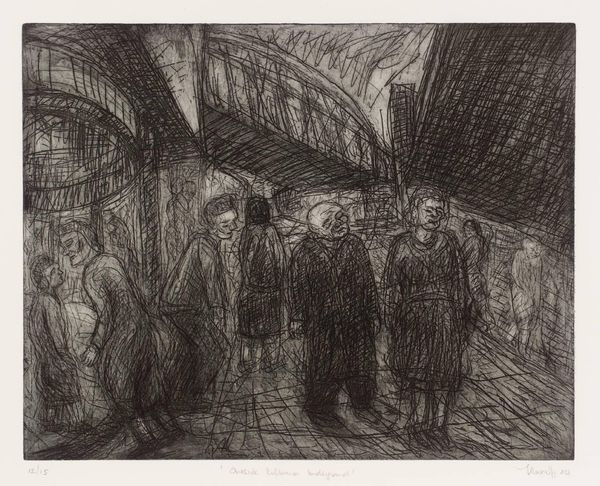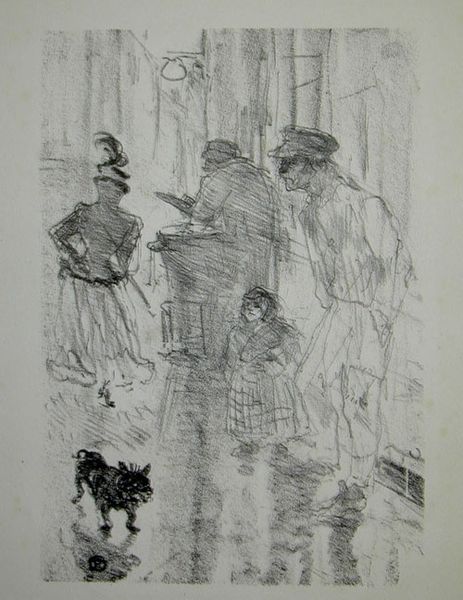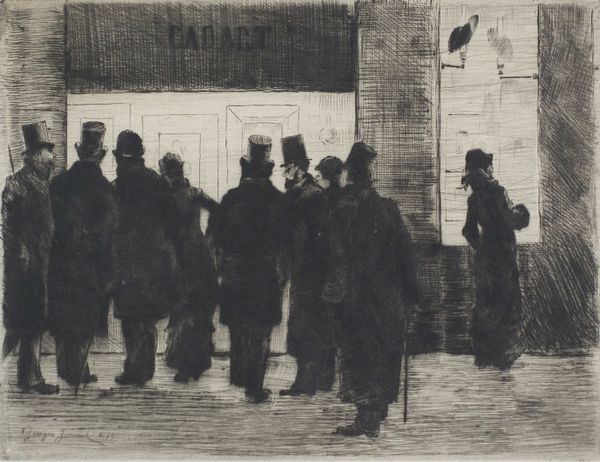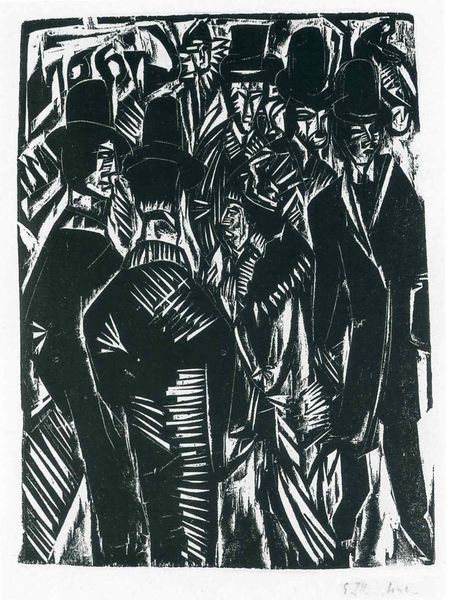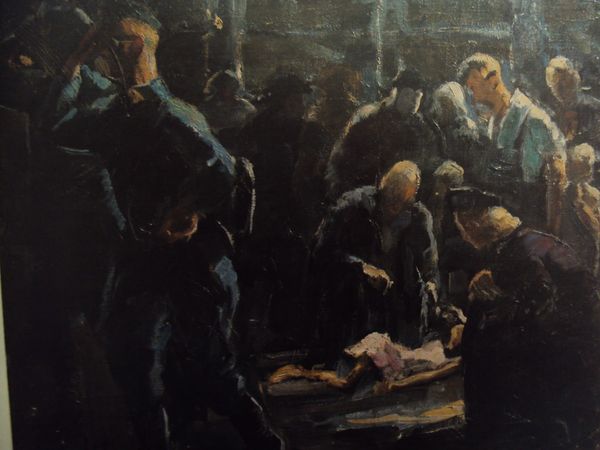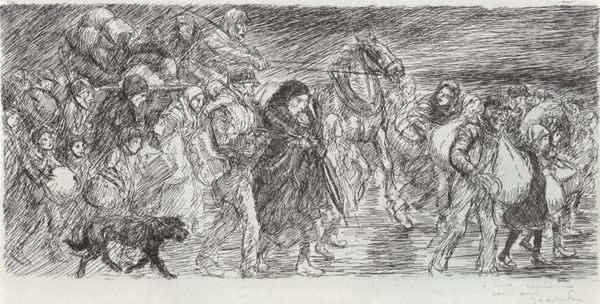
drawing, graphic-art, print, charcoal
#
portrait
#
pencil drawn
#
drawing
#
graphic-art
# print
#
pencil sketch
#
charcoal drawing
#
pencil drawing
#
sketch
#
symbolism
#
portrait drawing
#
charcoal
Copyright: Public domain
Curator: This is Théophile Alexandre Steinlen’s "Les Voilas," created in 1916 using charcoal and possibly pencil to produce this striking print. Editor: It strikes me as melancholic; a study in shadow and somber expressions. A profound, almost claustrophobic sense of collective experience pervades the drawing. Curator: Precisely. Steinlen created this during the First World War. We can read this image through the lens of that particular historical moment – a depiction of civilians, perhaps refugees or those impacted by the war, and consider how societal trauma and displacement are manifested. Observe the expressions of both male and female figures in distinct groups to question established gender norms related to vulnerability during conflict. Editor: The visual weight given to their clothing hints at a coded meaning, doesn't it? Those deep, heavy lines could denote not only material poverty but the poverty of spirit caused by prolonged exposure to such brutality and hardship, invoking a pervasive cultural anxiety. Their shared condition is visually reinforced, reminding me of shared experiences throughout time, depicted across cultures using similar graphic representations. Curator: Yes, and if you note the women huddled together on the left versus the men on the right – a separation seemingly created by a vertical plane – how might this division also reflect not only spatial arrangements, but potentially differing emotional landscapes and experiences of that historic moment? Is this group defined or confined by societal expectation of women during wartime, like mourning versus action? Editor: I agree. And perhaps this 'division' implies even a symbolic crossing, representing life and death itself. But for me, there's also an elemental quality to these people – they feel both timeless and universally resonant with our innate understanding of what displacement, trauma, and sorrow look like. Curator: Well, Steinlen certainly invites layered readings here. Understanding the social milieu in which "Les Voilas" emerged is pivotal. Its historical positioning enables us to recognize how trauma and conflict have shaped collective identities – and persist to influence societal and representational discourse, then and now. Editor: Exactly, Steinlen's artistic expression taps into a vein of shared humanity. Looking closer at art offers these windows into cultural symbols and shared consciousness. It truly transcends any one singular narrative, it is more akin to shared memory.
Comments
No comments
Be the first to comment and join the conversation on the ultimate creative platform.
